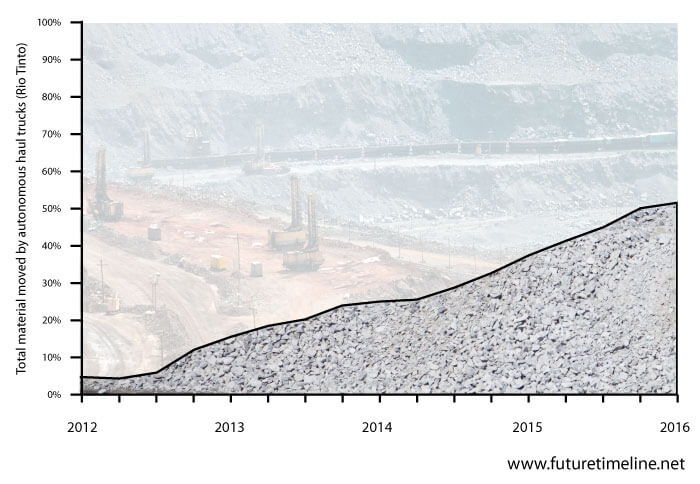Recent years have seen a rapid increase in the use of automation, a trend that is becoming especially prevalent in the mining sector. Rio Tinto, for example, now has a fleet of self-driving haul trucks which together are responsible for over half of its total material moved.** Codelco, meanwhile, has installed automated IT systems which now cover both its open pit mines along with all underground operations.* Wireless, intelligent devices are able to communicate with each other to monitor environmental conditions and to automate control of the mines' technological systems and equipment.
Self-driving vehicles, robotic drills, remote ship loading and other systems – despite their greater efficiency and improved safety – are now having a major impact on employment and economic activity. This is particularly true of Indigenous Australians in remote communities, for whom the mining industry has been their biggest employer. Some companies have promoted Aboriginal training, scholarships and business development, to provide the skills needed for new hi-tech jobs created by automation. However, the bulk of entry-level jobs are disappearing.*
As the use of robots and tele-operated machinery continues to increase, mining has begun to expand into new environments and locations that were previously off-limits to humans. This includes the seafloor, rich in metals like gold, copper, manganese, nickel and cobalt.** Longer term plans are being made to exploit asteroids.*


0 comments for "The mining industry is highly automated"
Post a Comment